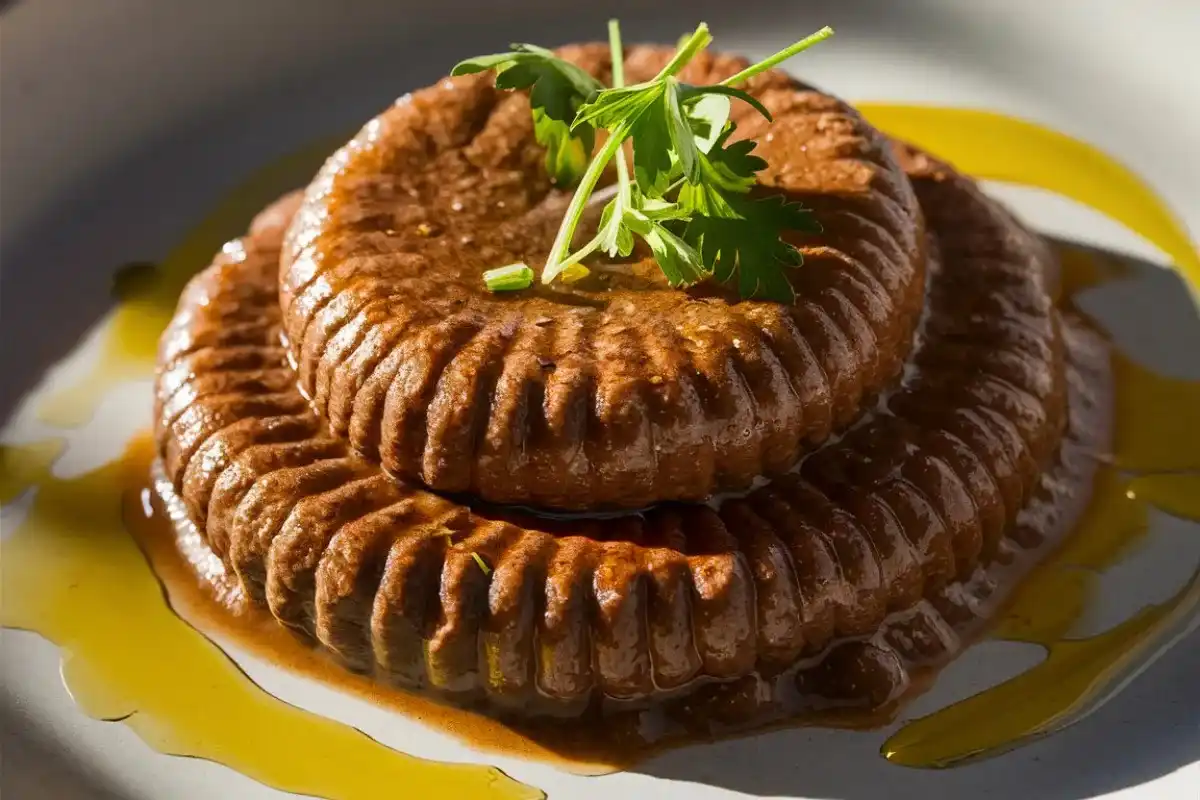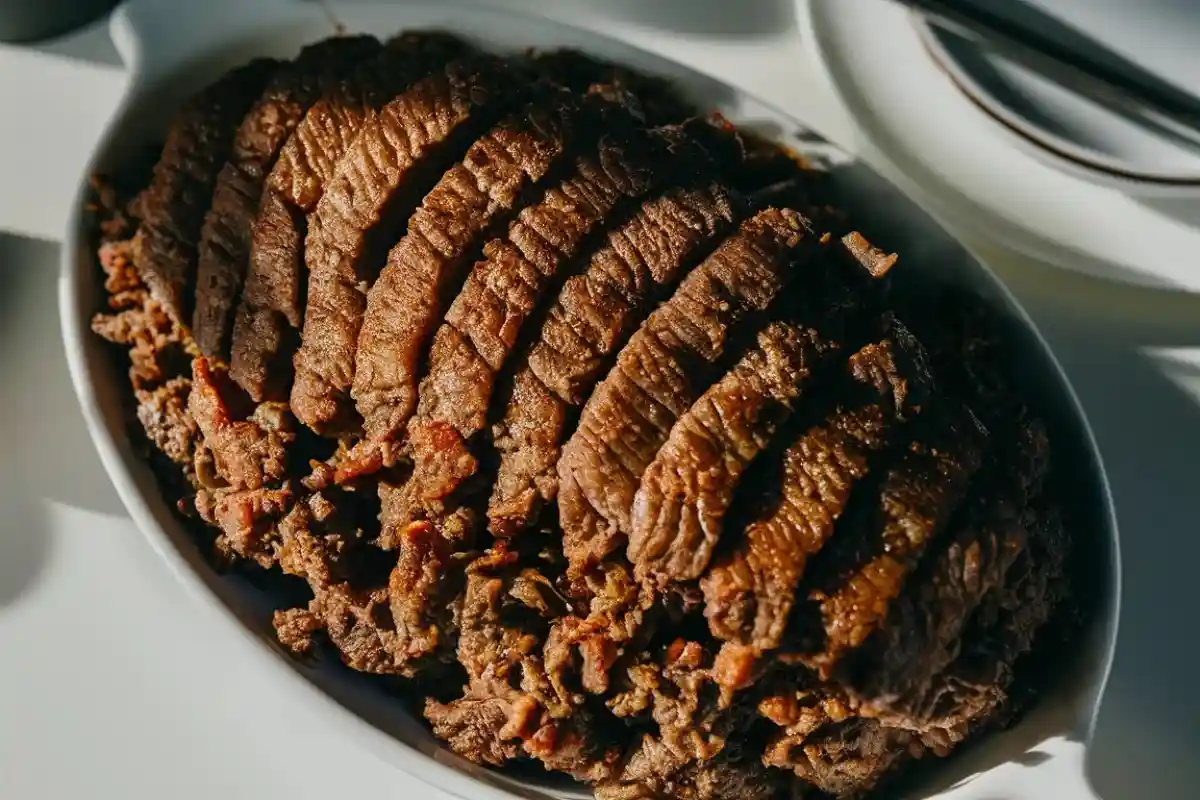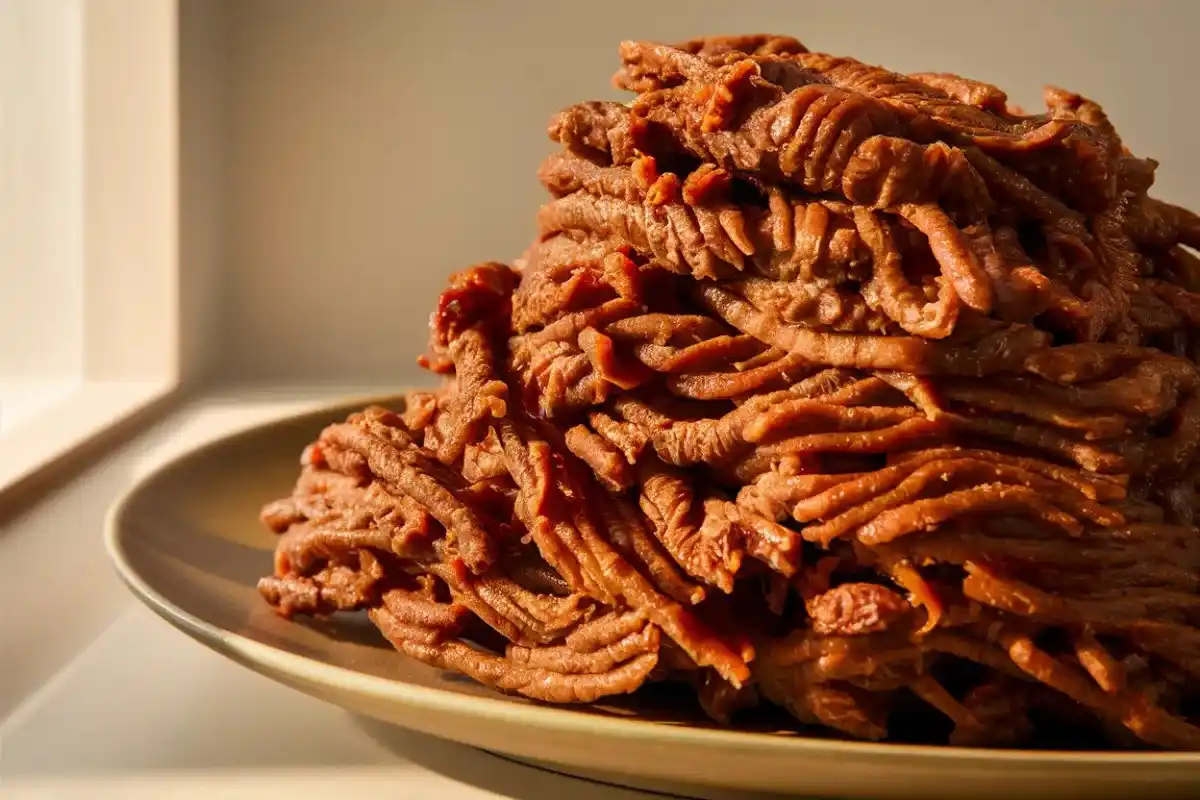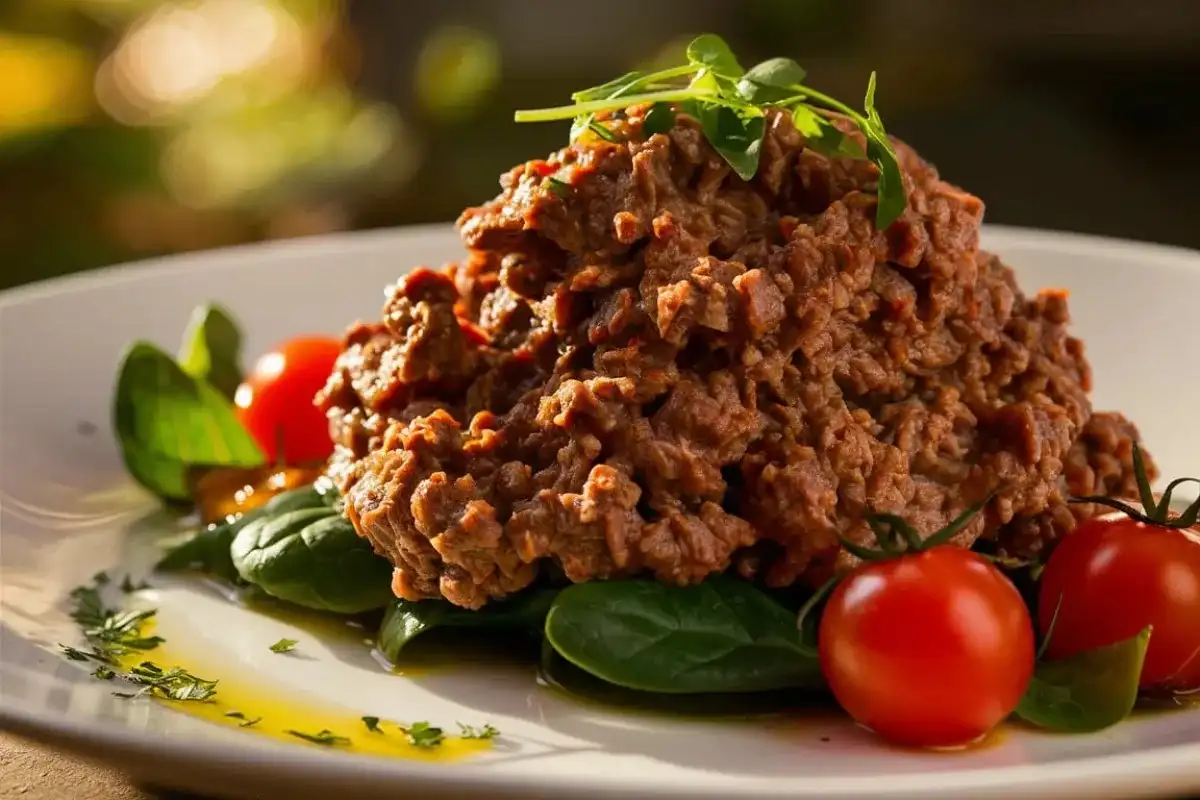Understanding how to thicken ground beef can elevate your cooking, preventing watery dishes and enhancing the texture of your favorite meals. From classic burgers and meatballs to hearty pasta sauces and taco fillings, ground beef can be the star of any meal. However, one of the common challenges with ground beef is achieving the perfect texture and consistency. Sometimes, it can turn out too watery or lack the binding necessary to hold together, impacting the final dish. This guide will explore various methods to effectively thicken ground beef, enhance its texture, and improve your overall cooking experience.
Why You Might Need to Thicken Ground Beef
Achieving the right consistency for ground beef is essential for both the texture and taste of your dishes. Here’s why you might need to thicken ground beef:
- Prevent Excess Moisture: Dishes like tacos, sloppy joes, and meat sauces often need thicker beef to avoid a soggy, unappealing texture.
- Improve Texture: Properly thickened ground beef holds together better, creating a more enjoyable eating experience, especially in patties and meatballs.
- Enhance Binding: Thickening agents can help bind the meat, making it easier to shape and cook, particularly in recipes that require forming the beef into specific shapes.
By incorporating these methods into your cooking routine, you’ll be able to create dishes with perfectly thickened ground beef every time. Below, we’ll cover several techniques ranging from traditional thickeners to creative culinary hacks. Understanding the science of cooking ground beef can help you master this essential kitchen skill.
Common Methods for Thickening Ground Beef

1. Adding an Egg Yolk
One of the simplest and most effective ways to thicken ground beef is by adding an egg yolk. Egg yolks act as a natural binder and thickener, helping the beef hold together without significantly altering the flavor.
- How to Use: Add one egg yolk per pound of ground beef. Mix thoroughly until evenly distributed throughout the meat.
- Best For: This method is ideal for meatballs, burgers, and meatloaf, where binding and texture are crucial.
2. Using Starches
Starches are versatile thickeners that can be easily incorporated into ground beef. For example, using cornstarch effectively can thicken sauces and taco fillings, while flour works well when mixed directly into the beef as it cooks.
- Flour: Add a small amount of flour directly to the ground beef while it’s cooking. The flour absorbs moisture, creating a thicker consistency.
- Cornstarch: Make a slurry by mixing cornstarch with water, then stir it into the beef. Cornstarch is particularly useful for thickening sauces and taco fillings. Check out how to thicken taco meat for more tips.
- Roux: A roux is a mixture of flour and fat, cooked together until it reaches a paste-like consistency. Adding a roux to ground beef gives it a rich, thick texture perfect for sauces.
3. Incorporating Vegetables
Adding vegetables to ground beef not only improves the nutritional value but also helps absorb excess moisture. Here are some great vegetables to consider:
- Grated Carrots: Carrots add a subtle sweetness and absorb liquid, helping to thicken the meat.
- Finely Chopped Zucchini: Zucchini provides moisture absorption without altering the taste too much.
- Mushrooms: Finely diced mushrooms blend well with ground beef and help soak up liquid, enhancing texture.
How to Use: Grate or finely chop vegetables and mix them into the beef as it cooks. The vegetables will absorb excess moisture while adding depth to the flavor profile.
4. Using Fillers
Fillers are great for thickening ground beef without adding too many additional ingredients. Here are some common fillers:
- Breadcrumbs: Breadcrumbs are a classic thickener used in a variety of ground beef dishes. They help absorb moisture, making the beef more cohesive.
- Oatmeal: Oatmeal works similarly to breadcrumbs but adds a slightly heartier texture. It’s a good option for dishes where you want to add bulk without drastically changing the flavor.
How to Use: Add a small amount of your chosen filler to the beef mixture, adjusting as needed based on the desired thickness.
5. Pulsing in a Food Processor
Pulsing ground beef in a food processor can significantly alter the texture, making the beef finer and more consistent. This method helps distribute fat and moisture more evenly, resulting in a thicker, more cohesive mixture.
- How to Use: Cook the ground beef, then pulse it briefly in a food processor until it reaches the desired consistency. Be careful not to over-process, as this can turn the beef into a paste.
- Best For: This technique works well for dishes like tacos, meat sauces, and any recipe where a finer texture is preferred.
6. Adding Cooked Beans or Chickpeas
Beans and chickpeas are excellent natural thickeners that can add texture and a bit of extra flavor to your ground beef. They also boost the dish’s overall fiber content.
- How to Use: Mash cooked beans or chickpeas and mix them into the ground beef. The beans will bind the meat and absorb extra liquid, helping to thicken the mixture.
- Best For: This method is perfect for hearty recipes like chili, tacos, and casseroles.
7. Using Masa or Cornmeal
Masa and cornmeal are often used in Latin American dishes and can provide an authentic texture and taste when thickening ground beef. Masa, in particular, is frequently used in taco meat to achieve the perfect consistency.
- How to Use: Sprinkle a small amount of masa or cornmeal into the beef as it cooks. Stir continuously to avoid clumping, allowing the masa to evenly distribute and thicken the mixture.
- Best For: This technique is particularly useful when making taco fillings or other Mexican-inspired dishes.
Advanced Techniques: How to Thicken Ground Beef

If you’re looking to refine your approach, here are some advanced methods that can elevate your cooking:
1. Reduce Liquid Content by Simmering
Reducing the liquid content through simmering is a straightforward but highly effective way to thicken ground beef. This method involves cooking the beef on low heat for an extended period to allow excess moisture to evaporate.
- How to Use: After browning the ground beef, lower the heat and let it simmer uncovered. Stir occasionally to ensure even cooking and prevent burning.
- Best For: This technique works well for sauces, chili, and other dishes where a thicker texture is desired.
2. Adjust Cooking Methods
The way you cook ground beef can significantly impact its texture. Here are some adjustments you can make:
- Brown the Beef Properly: Proper browning not only adds flavor but also helps to evaporate excess moisture. Make sure to brown the beef in a single layer, cooking in batches if necessary to avoid overcrowding the pan.
- Use a Heavy-Bottomed Skillet: A good skillet helps distribute heat evenly, allowing the beef to cook properly and thicken as needed.
- Avoid Adding Too Much Liquid: Be mindful of the amount of liquid you add during cooking, as too much can make the beef watery.
Common Mistakes to Avoid
When thickening ground beef, there are a few common mistakes to avoid to ensure the best results:
- Overusing Thickeners: Adding too much flour, cornstarch, or other thickeners can lead to a pasty or gummy texture. Start with a small amount and adjust as needed.
- Adding Thickeners Too Early: Timing is key when adding thickening agents. Adding them too early can alter the cooking process and affect the final texture.
- Not Draining Fat: Draining excess fat before adding thickeners ensures that your ground beef doesn’t end up overly greasy or oily.
Additional Tips for Perfectly Thickened Ground Beef

To get the most out of your thickening efforts, consider these additional tips:
- Season as You Go: Seasoning in layers allows you to build flavor without overpowering the dish. Adjust seasonings after adding thickening agents, as they may absorb some of the flavors.
- Stir Frequently: Stirring helps distribute the thickening agents evenly, preventing clumps and ensuring a smooth texture.
- Use the Right Heat: Medium heat is ideal for cooking ground beef. Too high, and you risk burning the outside while leaving the inside undercooked; too low, and the beef may not thicken properly.
Recipe Adaptations
Here’s how you can adapt these thickening methods for different recipes:
- Tacos: Using masa or cornmeal is a great way to keep the beef thick without altering the authentic flavor of the dish. It adds a subtle corn flavor that complements taco seasoning perfectly.
- Burgers and Patties: Adding egg yolk or breadcrumbs helps bind the meat, ensuring your burgers stay together on the grill.
- Meat Sauces: A roux or cornstarch slurry is ideal for thickening sauces, giving them a smooth, cohesive texture that clings well to pasta.
Frequently Asked Questions
- How to thicken hamburger meat?
- You can thicken hamburger meat by adding flour, breadcrumbs, or cornstarch. Each of these will absorb excess moisture and create a firmer texture.
- How to make ground beef not watery?
- To prevent ground beef from being watery, avoid adding too much liquid during cooking, brown it properly, and consider using a thickener such as cornstarch or masa.
- What does adding flour to ground beef do?
- Adding flour to ground beef absorbs moisture, thickens the meat, and creates a better texture, especially in dishes that need a solid, cohesive base.
- How do you thicken beef?
- Use thickeners like flour, cornstarch, or a roux. Adjust the cooking method by simmering to reduce excess moisture.
Conclusion
Thickening ground beef is an essential technique that can transform your dishes from average to exceptional. By using simple methods like adding egg yolks, incorporating fillers, or adjusting your cooking techniques, you can achieve the perfect texture for any recipe. Whether you’re making tacos, meatballs, or a hearty sauce, these tips and tricks will help you master the art of thickening ground beef, enhancing both the taste and presentation of your meals. Experiment with these approaches and discover which works best for your culinary needs!

